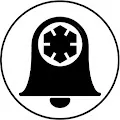Using Excel's Built-in Form (No Coding) for Fast Data Entry, Edit and Search Without Scrolling
307 views
Jul 8, 2025
Excel Form: Add, Edit, Search & Delete Records Easily: In this tutorial, you'll learn how to quickly enter, browse, edit, search, and delete records using Excel's built-in Form. What you'll learn: 1. How to open the Form in Excel 2. How to add new records without scrolling 3. How to search with criteria 4. How to edit and delete records cleanly Whether you're managing a customer list, order log, or inventory, the Form makes Excel data entry faster, cleaner, and more efficient.
View Video Transcript
0:00
Welcome. In this tutorial, we're
0:02
exploring one of Excel's most useful but
0:05
often overlooked feature, the form. If
0:08
you work with long lists or tables,
0:10
you've probably faced a few challenges.
0:12
To enter a new record, you have to
0:14
scroll all the way to the bottom. To
0:17
edit a record, you need to search
0:19
manually or use the find command, which
0:21
scans the entire worksheet instead of
0:23
just your table. And if you want to
0:25
delete a record, you're left cleaning up
0:27
the empty row afterward.
0:29
That's where Excel's form feature comes
0:31
in. To open the form for a list or
0:34
table, first click anywhere inside it.
0:37
Then go to the search box at the top of
0:39
the Excel window and type form. When the
0:41
form command appears in the results,
0:43
click it. This opens the data entry form
0:46
for your table. The form uses the first
0:48
row of your table as field names. Each
0:51
field appears as a labeled input box,
0:54
allowing you to quickly add, view, edit,
0:57
or delete records, all in a clean,
1:00
scroll-free dialogue. To add a new
1:02
record to the list or table, simply
1:05
click the new button in the form. This
1:07
clears all the fields, ready for you to
1:09
enter a new entry. Let's try a few
1:11
sample entries to see how it works.
1:13
After filling in the fields, press enter
1:16
or click new again to save the entry.
1:23
Now close the form and scroll to the
1:25
bottom of your table. You'll see that
1:27
your data has been added neatly in the
1:29
right cells. That's one of the biggest
1:31
advantages of the form is that it lets
1:33
you add data without scrolling, making
1:35
entry faster and more organized.
1:41
You can also browse records in the form
1:43
using the scroll bar. It shows one
1:45
record at a time. And just above the new
1:48
button, you'll see which record is
1:50
currently being displayed. For example,
1:52
one of 79 or two of 79. Alternatively,
1:57
you can use the find previous and find
1:59
next buttons to navigate through records
2:01
without using the scroll bar. To delete
2:04
a record, just click the delete button.
2:06
The record is removed instantly and no
2:09
empty cells are left behind. So, your
2:11
list or table remains clean and
2:13
contiguous. For example, if we delete
2:16
the record for Zara Ali, you'll see that
2:19
the entry is gone and there are no blank
2:21
rows left. Even if we delete the first
2:24
record, the table stays intact. This
2:26
saves time compared to manually deleting
2:29
data and then cleaning up the empty
2:31
cells. On the form, you'll also notice a
2:34
button called criteria. This is used to
2:37
search for specific records. When you
2:39
click criteria, the fields clear,
2:42
allowing you to enter search terms. You
2:44
can fill in one or more fields like
2:46
entering Aisha under customer name. Then
2:49
click find next or find previous to
2:51
locate matching records quickly.
2:54
To search for another set of records,
2:56
click the criteria button again to clear
2:58
the form. Then fill in one or more
3:00
fields to define your search. For
3:03
example, if you want to find all records
3:05
where quantity is five, just enter five
3:08
in the quantity field and click find
3:10
next or find previous. This makes it
3:12
easy to search within your table unlike
3:15
the regular find dialogue box which
3:17
searches the entire worksheet. Also,
3:20
while in form mode, you can easily
3:22
modify the current record. Just edit the
3:25
fields you want to change and press
3:27
enter. The updates are saved instantly
3:29
in the table. When you're done, click
3:32
the close button to exit the form. By
3:34
default, the form command isn't
3:36
available on the ribbon. To add it to
3:38
the quick access toolbar, click the
3:40
drop- down arrow next to the toolbar and
3:42
choose more commands. In the Excel
3:44
options window, set the drop-own to
3:46
commands not in the ribbon, then find
3:49
and select form from the list. Click add
3:52
and then click okay to close the
3:53
dialogue box. Now, the form command is
3:57
always available on your toolbar, so you
3:59
don't have to search for it every time.
4:01
Thanks for watching. If you found this
4:02
tutorial helpful, please like,
4:04
subscribe, and turn on notifications for
4:07
more Excel tips and tutorials.


